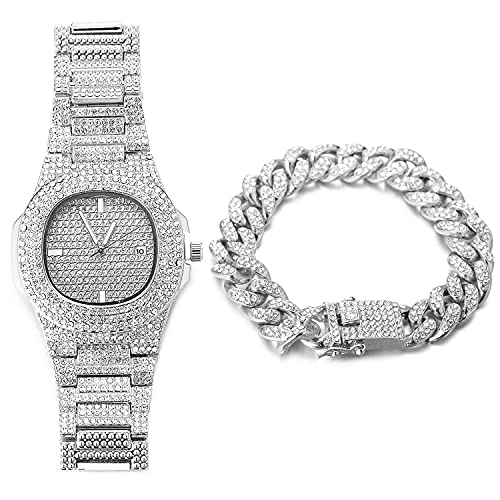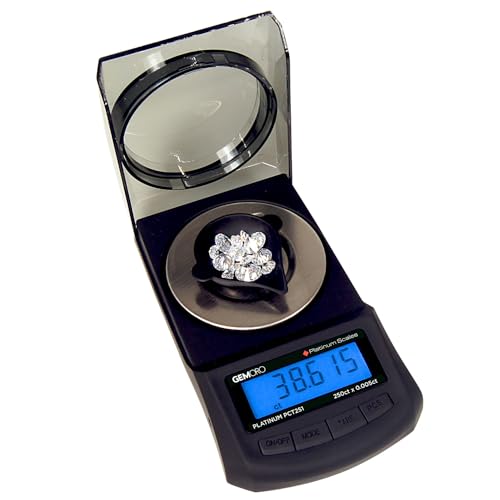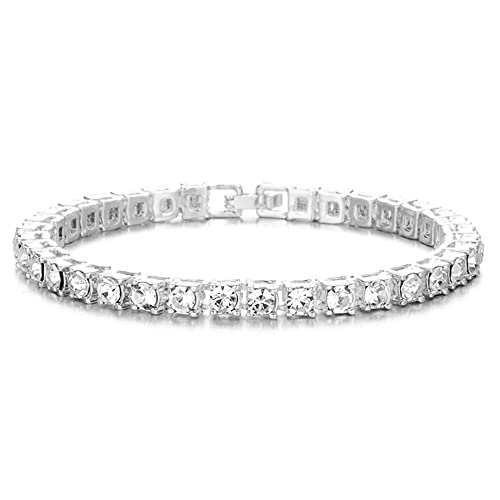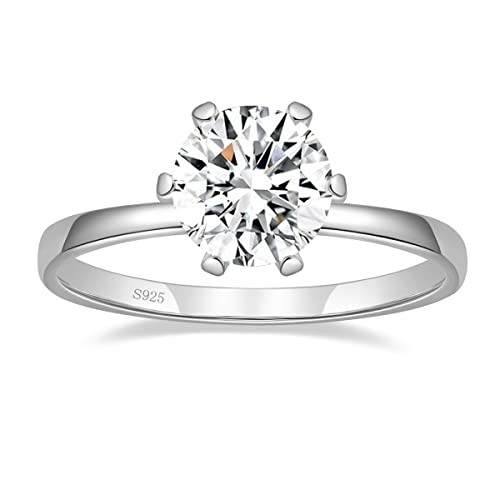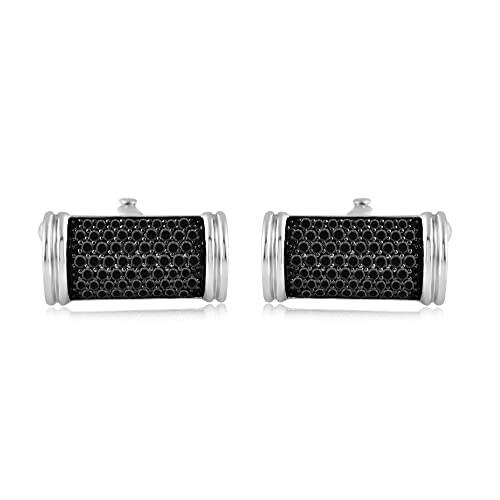This step-by-step guide provides a comprehensive understanding of the different diamond cuts available in diamond watches. Readers will learn about the purpose and significance of diamond cuts, enabling them to make informed decisions when choosing a diamond watch.
Timeless Elegance: Diamond Watch Collection
Understand the Basics
- Familiarize yourself with the basic concepts of diamond cuts. Understand how the cut of a diamond affects its brilliance and overall appearance. Research different diamond shapes, such as round, princess, and emerald cuts, to gain a better understanding of their unique characteristics.
- Learn about the 4Cs of diamonds: cut, clarity, color, and carat weight. Each of these factors plays a significant role in determining the value and quality of a diamond. Dive into each category to grasp the key aspects to consider when choosing a diamond for a watch.
- Establish a solid foundation for recognizing and appreciating the importance of diamond cuts in watches. Understand how different cuts can enhance the aesthetics and value of a timepiece. Explore examples of watches featuring diamonds with various cuts to further solidify your understanding.
Research Different Diamond Cuts
#
Explore the different diamond cuts commonly used in diamond watches. Some popular cuts include:
- Round Brilliant
- Princess
- Emerald
- Marquise
- Cushion
Research each cut to understand their unique characteristics and visual appeal.
Steps to Research Diamond Cuts
- Round Brilliant: Begin by searching for information about the round brilliant cut. Look for articles, videos, or websites that explain its features, such as its 58 facets and excellent brilliance. Take note of any interesting facts or historical significance related to this cut.
- Princess: Research the princess cut, known for its square shape and sharp corners. Learn about its different variations and how it compares to other cuts in terms of brilliance, fire, and uniqueness. Look for expert opinions, cutting techniques, and notable examples of princess-cut diamonds.
- Emerald: Explore the emerald cut, characterized by its rectangular shape and stepped faceting. Study the specific attributes of this cut, including its elegance, sophistication, and ability to highlight a diamond’s clarity. Find out more about its history, the types of gemstones it is commonly used with, and any famous emerald-cut diamonds.
- Marquise: Investigate the marquise cut, which features an elongated shape with pointed ends. Research the origins of this cut, its popularity, and the qualities that make it unique. Look for information on how marquise-cut diamonds are set in jewelry and any recommended proportions or guidelines for optimum beauty.
- Cushion: Finally, research the cushion cut, renowned for its vintage appeal and romantic charm. Understand the defining characteristics of this cut, such as its pillow-like appearance and mixture of square and rounded edges. Look for examples of cushion-cut diamonds in different settings and evaluate their visual impact.
By following these steps and thoroughly researching each diamond cut, you will gain a comprehensive understanding of their individual characteristics and be able to appreciate the unique beauty they bring to diamond watches.
Learn About Cut Grades
- Familiarize yourself with the diamond cut grading system used by the GIA.
- Study the scale from Excellent to Poor to understand the different grades.
- Assess how these cut grades affect the diamond’s beauty and brilliance.
- Analyze samples of diamonds with different cut grades to visually compare their sparkle and brilliance.
- Observe the way light interacts with each diamond to understand how cut impacts its overall appearance.
- Familiarize yourself with industry terminology related to diamond cut, such as proportions, symmetry, and polish.
- Read expert articles or watch educational videos to gain further insights into the importance of cut grades in diamond evaluation.
Consider the Watch Design
Consider the watch design and style you prefer by analyzing the shape, size, and overall aesthetics of the watch. Determine whether you lean towards a more classic, minimalist, or sporty design. For example, if you’re inclined towards a classic style, a round-cut diamond may complement the elegance and simplicity of the watch. On the other hand, if you prefer a modern and edgy design, a marquise or princess-cut diamond might be a better fit.
Evaluate the Diamond's Sparkle
Assess the diamond’s sparkle and brilliance by observing how it reflects light. Start by analyzing the different cuts, as they play a crucial role in determining the level of sparkle. Take note that each cut interacts with light differently, resulting in its unique sparkle. To make the right choice, first, determine the amount of sparkle you desire. Once you have a preference in mind, select a diamond cut accordingly, ensuring that it meets your sparkle expectations.
Examine Diamond Cut Quality
To inspect the quality of the diamond’s cut, follow these steps:
- Look for symmetrical facets: Examine the diamond under proper lighting and inspect if its facets are evenly distributed. A well-cut diamond should have symmetry, with each facet reflecting light uniformly.
- Check for proper proportions: Assess if the diamond has its proportions balanced correctly. The table, crown, and pavilion angles should be in harmony to maximize the diamond’s brilliance and fire.
- Examine craftsmanship: Pay attention to the quality of the diamond’s faceting and polishing. The facets should be smoothly polished with no visible scratching or chipping. The diamond’s edges should be well-shaped and free from any roughness.
Remember to prioritize a well-cut diamond as it will enhance the overall beauty and visual appeal of the watch.
Consider Personal Preferences
When choosing a diamond cut, it’s important to take your personal preferences into account. Keep in mind that different cuts give diamonds different looks and styles. Here’s a guide to help you make a decision that resonates with your style and personality:
- Understand the different diamond cuts available: Familiarize yourself with the various diamond cuts, such as round brilliant, princess, emerald, cushion, or marquise. Each cut showcases diamonds in a unique way, so it’s essential to know which ones appeal to you.
- Consider your personal style: Think about your overall fashion style and the type of jewelry you usually wear. If you prefer a classic and timeless look, the round brilliant cut might suit you. On the other hand, if you lean towards a contemporary and edgy style, the princess cut might be more your speed.
- Choose a cut that complements your personality: Your choice in diamond cut can reflect aspects of your personality. For instance, if you’re more traditional, you might lean towards a round brilliant cut. If you’re bold and adventurous, a fancy cut like an emerald or marquise shape could be a perfect fit.
- Consider the finger shape and size: Keep in mind that certain diamond cuts can enhance the appearance of your hand when worn as a ring. For example, a marquise cut can create the illusion of longer and slimmer fingers, while a round brilliant cut can complement wider fingers.
- Take inspiration from others: Look for examples of diamond cuts that you find visually appealing. Explore jewelry catalogs, online stores, or social media platforms to see how different cuts look on various people. You might find that certain cuts catch your eye more than others.
Remember, choosing the right diamond cut is a subjective decision. It’s all about finding a cut that speaks to your individual taste and style. By considering your personal preferences, you can select a diamond cut that you’ll love and cherish for years to come.
Consult with Experts
Consult with Experts
- Unsure about which diamond cut to choose?
- Visit reputable jewelers or seek guidance from gemologists.
- They can provide valuable insights and recommendations based on their expertise in the field.
- Consult with experts to make an informed decision about your diamond purchase.
Make an Informed Decision
Research different diamond cuts, considering factors such as brilliance and sparkle. Understand the impact of diamond cut on the watch’s overall appearance and value. Consult experts or trusted sources for advice on the best diamond cut options within your budget. Assess the durability of different diamond cuts and prioritize long-term value when making your final decision.
Key takeaways
To summarize, the knowledge of diamond cuts empowers buyers to select a diamond watch that best suits their preferences and personal style. By considering factors such as the cut’s impact on the diamond’s brilliance and the overall aesthetic of the watch, individuals can confidently make a purchase that enhances their style and value. So, take the time to educate yourself on the different diamond cuts and enjoy the elevated elegance they bring to your wrist.
Choosing the Perfect Cut
A Quick Guide by GIA: Choosing the Perfect Diamond in Four Minutes
Getting the most out of your diamond watch
- Start by familiarizing yourself with the different features of diamond watches, such as the dial design, diamond settings, and strap materials
- Always ensure that you handle the watch with care, as diamonds can be delicate and prone to damage
- When wearing the diamond watch, avoid exposure to extreme temperatures, chemicals, or excessive force that could potentially harm the diamonds or the watch mechanism
- Regularly clean your diamond watch using a soft cloth to remove any smudges or dirt that may accumulate over time
- Store the diamond watch in a safe place, preferably in a box or pouch designed for jewelry, to protect it from scratches or other forms of damage when not in use
Common Questions about Diamond Watches
Do diamond watches hold their value over time?
Diamond watches generally hold their value over time. Diamonds are one of the most sought-after gemstones and are known for their durability and rarity. Unlike other luxury items that may depreciate over time, diamond watches tend to retain or even increase in value. The value of a diamond watch depends on various factors, such as the quality and size of the diamonds, the brand, the condition of the watch, and market demand. However, it’s important to note that not all diamond watches will have the same investment potential, and fluctuations in the market can affect their value. Therefore, it is always advisable to do thorough research and consult experts before making any investment decisions.


